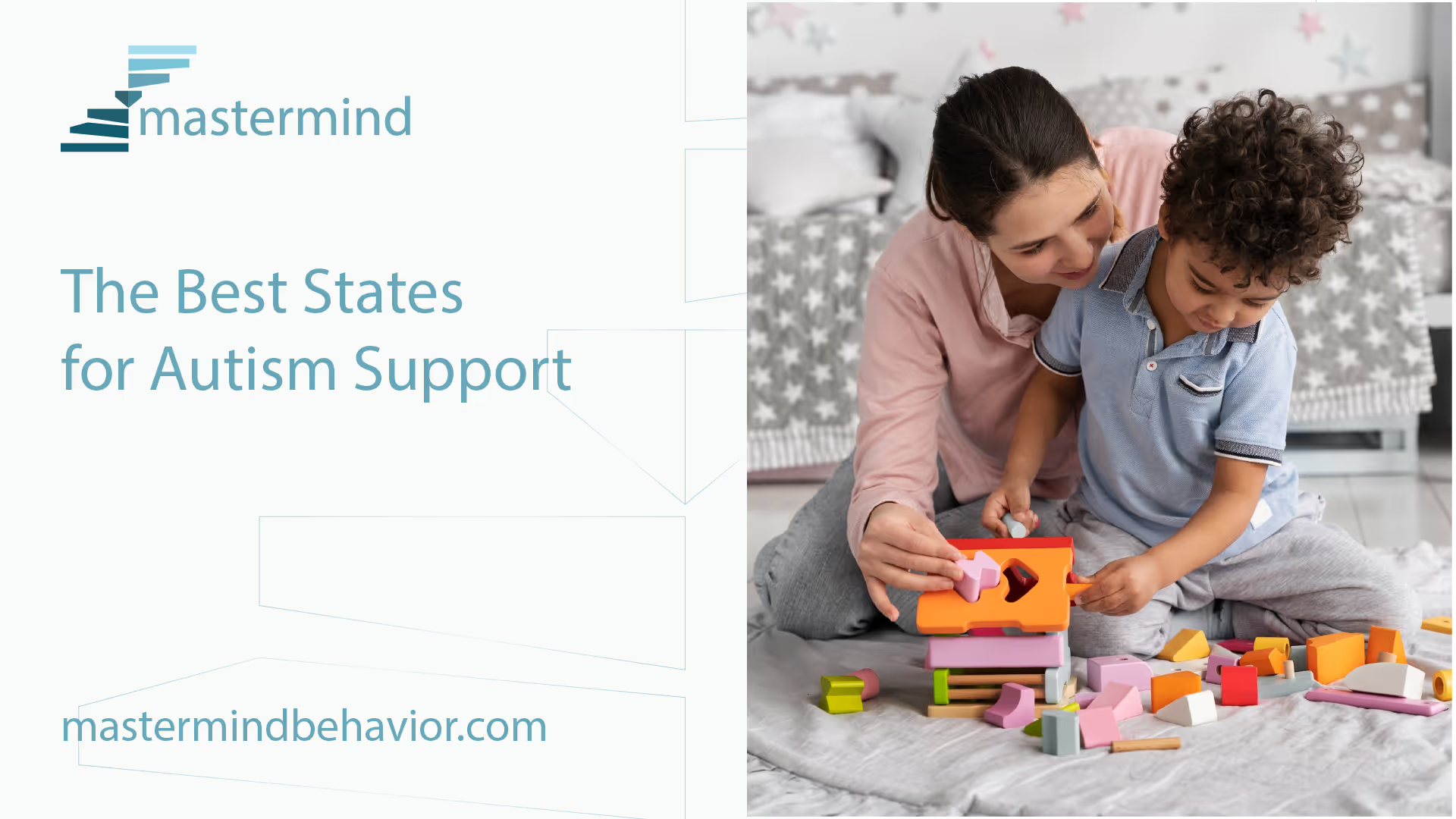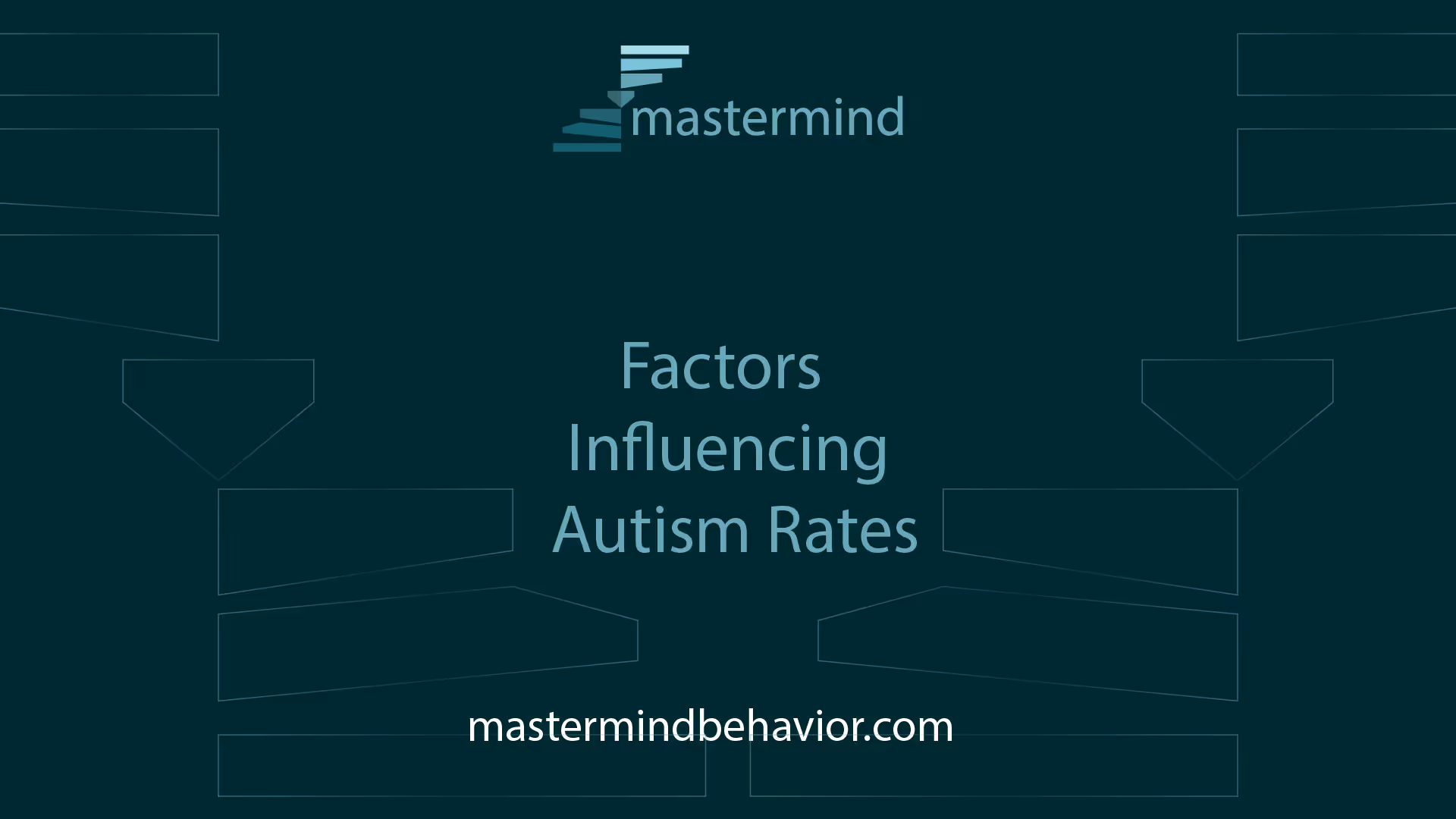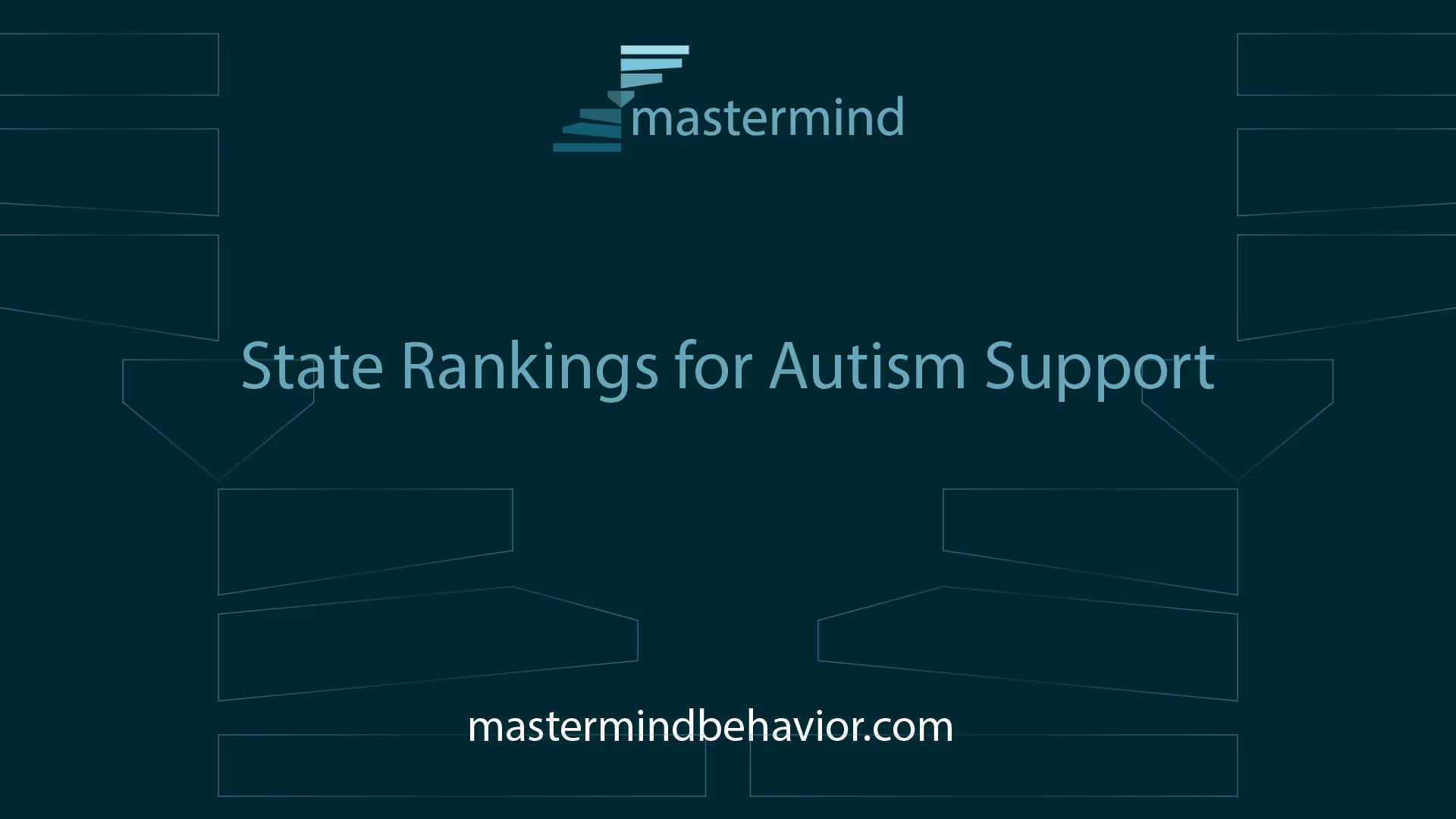The Best States for Autism Support

Understanding Autism Prevalence

Autism is a developmental disorder that affects millions of individuals worldwide. In the United States, the prevalence of autism varies widely from state to state. Understanding these variations can help inform strategies for providing services and support to individuals with autism and their families.
State-Level Variations
The prevalence of autism among adults in different states varies considerably. According to the World Population Review, the estimated state-level prevalence of autistic adults ranges from about 1.97% in Louisiana to 2.42% in Massachusetts. South Carolina is the only other state with a prevalence below 2%, while states like New Jersey, Illinois, Pennsylvania, Minnesota, California, Connecticut, and Virginia have a high prevalence above 2.3%.
However, when it comes to the prevalence of autism among children, the figures differ. For instance, according to figures released by the ADDM Network, California is the state with the highest prevalence of autism diagnoses, with over 40 out of every 1,000 identified children diagnosed with autism in 2020. On the other hand, Maryland has the lowest number of children diagnosed with autism, with a prevalence of 1 in 43, an increase from 2018 when the prevalence was 1 in 49 children.
Recent CDC Findings
According to the most recent analysis published by the CDC, 1 in 36 (2.8%) 8-year-old children have been identified with autism spectrum disorder (ASD), a higher figure than the previous 2018 estimate of 1 in 44 (2.3%). It's important to note that these figures come from 11 communities in the Autism and Developmental Disabilities Monitoring (ADDM) Network and are not representative of the entire United States.
Furthermore, the prevalence of ASD among children of different racial and ethnic groups has increased significantly. For the first time, the percentage of 8-year-old Asian or Pacific Islander (3.3%), Hispanic (3.2%), and Black (2.9%) children identified with autism was higher than among 8-year-old White children (2.4%).
In addition, the prevalence of autism among 8-year-old girls exceeded 1% for the first time, with the latest ADDM report indicating that autism prevalence was nearly four times higher for boys than girls.
Autism prevalence in the 11 ADDM communities ranged from 1 in 43 (2.3%) children in Maryland to 1 in 22 (4.5%) in California, highlighting variations in how communities identify children with autism. These differences offer an opportunity to compare local policies and models for delivering diagnostic and intervention services to enhance autism identification and support.
Understanding the prevalence of autism in different states and among different demographic groups is critical for planning and implementing effective support services. For more information on services and support for individuals with autism, visit our pages on what is occupational therapy for autism? and weighted blankets for autism.
Factors Influencing Autism Rates

To understand the variation in autism rates across states, it's crucial to examine the factors that influence these rates. Two key factors include racial and ethnic patterns and gender disparities.
Racial and Ethnic Patterns
There has been a noticeable shift in the balance of autism identification among people of color. According to a 2023 report by the CDC, ASD prevalence among Asian, Hispanic, and Black children was higher than among 8-year-old White children. This marks a change from previous ADDM reports that indicated non-Hispanic white children were more likely to be diagnosed than non-Hispanic black and Hispanic children.
ASD prevalence among Asian, Black, and Hispanic children was at least 30% higher in 2020 than in 2018. For the first time, the percentage of 8-year-old Asian or Pacific Islander (3.3%), Hispanic (3.2%), and Black (2.9%) children identified with autism was higher than among 8-year-old White children (2.4%) [2].
Gender Disparities
There are also significant gender disparities in autism rates. Boys are four times more likely to be diagnosed with autism spectrum disorder than girls. The latest ADDM report shows that overall autism prevalence within the ADDM sites was nearly four times higher for boys than girls. Interestingly, the prevalence of autism among 8-year-old girls has exceeded 1% for the first time.
The CDC report also indicates a 4-to-1 ratio of male-female autism diagnoses. However, there is skepticism about this figure as it has barely changed over the past decade, despite an overall rise in prevalence [3].
Understanding these patterns can help inform strategies to support individuals with autism and their families. For instance, recognizing the higher prevalence of autism among boys can guide the development of targeted interventions and supports. Similarly, acknowledging the increasing identification of autism among people of color can inform efforts to ensure that culturally responsive services are available across all states for autism.
Importance of State Laws
State laws play a pivotal role in shaping the landscape of support and services available to individuals with autism and their families. This extends beyond the scope of federal laws, influencing the quality and availability of services at a local level.
Impact on Support Services
State laws and policies contribute significantly to the available support and services for individuals with autism. While federal laws provide an overall framework for autism advocacy, variations in state laws and policies can lead to disparities in the quality and availability of services. Factors contributing to these variations include state-level initiatives and specific laws and policies at the state level [4].
For instance, Alabama requires health benefit plans to provide coverage for the screening, diagnosis, and treatment of autism spectrum disorder for individuals under the age of eighteen. On the other hand, Alaska mandates certain insurers to provide coverage for the diagnosis and treatment of autism spectrum disorder for individuals under 21, effective January 1, 2013 [5].
Educational Policies
Educational policies also play a significant role in supporting students with autism, promoting inclusive education, and providing necessary support to students with autism. These policies ensure students with autism have access to an education that meets their unique needs, including inclusive education practices and individualized education plans (IEPs) for appropriate support and accommodations [6].
For instance, Arizona requires policies issued by certain health insurers to provide coverage for the diagnosis and treatment of autism spectrum disorder, including diagnosis, assessment, and services. Behavioral therapy is specifically defined as applied behavioral analysis, and coverage limitations for behavioral therapy are set out.
In conclusion, the laws and regulations put in place by different states for autism can greatly impact the level and types of support services available to individuals with autism and their families. It's crucial for families to understand these laws to effectively navigate the support systems and resources available in their respective states.
State Rankings for Autism Support

When it comes to providing support for individuals with autism and their families, certain states stand out for their exceptional services, resources, and policies.
California's Leading Role
California has established a leading role in the support of individuals with autism, ranking number one in the provision of grants, state laws, and ADDM inclusion. This makes it the only state that has made services and supports for disabilities an entitlement. However, it's important to note that due to a lack of resources in ratio to its population, California doesn't rank as one of the overall best states for autism support.
Supportive States Comparison
Comparatively, Colorado, Massachusetts, and New Jersey emerge as the overall most supportive states for raising a child with autism. On the other hand, West Virginia, New Mexico, and Tennessee rank as the least supportive states.
Several other states are also renowned for their autism services and support programs. For instance:
- Georgia: Known for its excellent autism services, Georgia is a leader in autism research and treatment. The state has implemented several autism insurance laws making it easier for families to access necessary care and services.
- Indiana: Indiana has an autism insurance mandates and organizations that provide valuable resources, education, and support to individuals and families affected by autism.
- North Carolina: With an autism insurance mandate, North Carolina provides the necessary care and support for individuals with autism spectrum disorder (ASD) without causing financial hardship to their families.
- Oklahoma: The state has several organizations and support groups dedicated to improving the lives of individuals with autism and their families through education, advocacy, and support. Oklahoma also has an autism insurance mandate [8].
- Utah: Known for its excellent autism services and support programs, Utah offers a range of resources and organizations to help families affected by autism navigate the challenges of ASD.
By understanding the landscape of autism support in different states, families can make informed decisions about where to seek care and resources for their loved ones. However, no matter which state one resides in, it's crucial to remember that various resources, such as occupational therapy for autism and weighted blankets for autism, can assist in managing autism symptoms and improving quality of life.
Legal Rights and Protections
When considering the best states for autism, it's important to understand the legal rights and protections in place for individuals with autism. These rights, protected by various autism laws and policies, include equal treatment, reasonable accommodations, access to education, healthcare, and housing.
Employment Accommodations
Autism should not be a barrier to gainful employment. Laws and policies are in place to ensure employers provide reasonable accommodations and adjustments to support autistic individuals in the workplace. These accommodations could include assistive technologies, modified work schedules, flexible arrangements, sensory accommodations, additional training, or support to create an inclusive work environment.
For example, an individual might need certain adjustments to their work environment, such as a quiet workspace or use of weighted blankets for autism to manage sensory issues. Employers can also provide additional training to help their staff understand autism and emotions, fostering a more inclusive and understanding workplace.
Such accommodations are essential for ensuring equal access to employment opportunities and fair treatment, as mandated by various employment laws and policies.
Healthcare and Housing
In terms of healthcare, autistic adults have the right to access services without discrimination. This includes primary care, specialized autism services, mental health support, and other necessary medical treatments. Laws and policies ensure insurance coverage for autism-related services, including essential interventions and therapies. For instance, an individual with autism has the right to access therapies such as occupational therapy for autism.
In housing, fair laws protect individuals with autism from discrimination, providing accommodations to support their unique needs and ensuring equal access to housing opportunities. Reasonable accommodations in housing might include modifications to policies, rules, or practices to create an inclusive and accessible living environment for individuals with autism [6].
The legal rights and protections for individuals with autism play a significant role in the quality of life they can expect in different states. Understanding these rights and protections can help families make informed decisions when choosing the best states for autism support and services.
Accessing Autism Services
When considering the best states for autism, not only is it important to understand the prevalence and legal protections in place, but also the ease of accessing autism services. This section further explores the disparities in state resources and considerations around insurance coverage.
State Resource Disparities
There is a considerable variation in the availability of autism resources across different states. According to Autism Parenting Magazine, the average distance between an individual with autism and any of the seven resource categories (Diagnosis, Therapy, Health, Education, Recreation, Support, and Other) in the USA is 17.12km. However, some individuals are over 35km away from a Diagnosis resource.
These figures highlight the need for parents and caregivers to carefully consider the location and accessibility of resources when choosing a place to live. Greater accessibility to resources can lead to better outcomes for individuals with autism, such as improved social skills and reduced anxiety. For more information on therapy options, see our article on what is occupational therapy for autism?.
Insurance Coverage Considerations
Insurance coverage is another critical factor in accessing autism services. Almost all states in the USA have a law requiring insurance coverage for autism treatments. However, the specifics, such as age limits and costs covered for Applied Behavior Analysis (ABA) therapy, can vary significantly between states Autism Parenting Magazine.
Here is a snapshot of the insurance mandates in select states:
Details courtesy ASHA
Understanding these insurance considerations can help families navigate the complexities of accessing autism services in their respective states. For more information on resources and support for individuals with autism, see our articles on weighted blankets for autism and autism and emotions.
References
[1]: https://www.autismparentingmagazine.com/autism-rate-by-state/
[2]: https://www.cdc.gov/media/releases/2023/p0323-autism.html
[3]: https://www.statnews.com/2023/03/23/autism-epidemic-cdc-numbers/
[4]: https://www.adinaaba.com/post/autism-laws-and-policies
[5]: https://www.asha.org/advocacy/state/states-specific-autism-mandates/
[6]: https://www.abtaba.com/blog/autism-laws-and-policies
[7]: https://www.autismparentingmagazine.com/supportive-states-raising-autism-child/
Recent articles

How ABA Therapy Can Help with Building a Growth Mindset
Fostering Resilience and Growth Through ABA Therapy

How to Find a Qualified ABA Therapist for Your Child
Unlocking the Path to Quality ABA Therapy for Your Child

How to Introduce Mindfulness Techniques to Children with Autism
Effective Strategies for Supporting Neurodiverse Minds

The Role of Functional Communication Training in Autism Treatment
Empowering Communication to Transform Lives in Autism

How to Build a Collaborative Therapy Team for Autism Treatment
Fostering Effective Collaborations in Autism Therapy

How ABA Therapy Helps with Behavioral and Emotional Regulation
Empowering Growth Through Behavioral and Emotional Mastery


